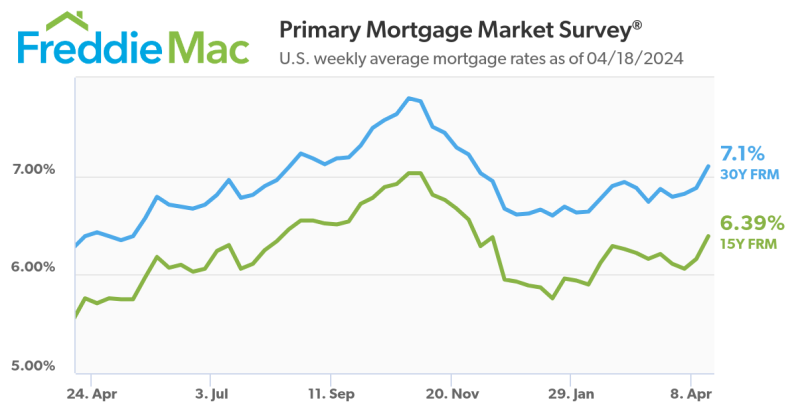Advertisement
Brand mortgage group selects Sollen Technologies to provide product and testing
When the phone stops ringing: A broker's guide to an effective direct marketing campaignRichard Scoliodirect marketing, refinance boom, delivery media, telemarketing, direct mail
Silence. To many, silence comes as a welcome sound, a sign of a
few moments of peace in an otherwise hectic day, a time of
reflection, rest and relaxation. To a mortgage loan officer,
however, silence is deadly. Silence is the sound of no prospects
calling, no loans closing, and no increase to your bottom line. To
a mortgage loan officer, silence is the sound the phone makes when
it is not ringing.
Interest rates are rising. The refinance boom is over. The
sub-prime sector continues to face more and more scrutiny from
consumer advocacy groups and regulators. The mortgage industry is
on the verge of exiting one of the most profitable eras of its
existence. As a new era in mortgage lending begins to define
itself, one thing can be certain: only those who are willing to
adapt, with pro-activity and innovation, will survive.
In tough times, it is important to maximize time and be as
effective as possible. Direct marketing can be a great medium for
this because it focuses on a targeted audience that has a need for
a particular product. By combining the right data with the right
offer, efficient execution, and measuring success, anyone can
complete a successful direct marketing campaign.
Where to start: Finding the right data and the right
offer
Executing an effective direct marketing campaign is not easy. The
best place to start is by understanding what makes a campaign
successful. Many people are caught up trying to develop a highly
creative campaign and lose sight of what is going to make it
successful. In a traditional campaign, success is driven by two
main factors: the data and the offer.
Data is a significant determinant of success because it is used
to target the audience to which an offer will be extended. The more
targeted the data, the more likely you will reach qualified
responders. For example, if a mortgage broker mails a letter to a
list of homeowners in a particular zip code for sub-prime
refinance, chances are he or she will have people who are both
sub-prime and prime responding to the offer. This not only wastes
valuable marketing dollars, but it also hurts the broker's
efficiency by having to handle calls from homeowners who do not fit
the loan product target. However, if that broker sends the letter
to homeowners in a particular zip code who have a credit score of
600 to 650, have a loan-to-value ratio of 50 percent to 75 percent,
and have not refinanced within the past year, it will dramatically
increase the likelihood of response as well as improve efficiency
on the back end. This happens because the responders have a need
for a sub-prime mortgage product, since they most likely do not
qualify for a conventional loan.
Data will always be a key contributor to the success of your
direct marketing campaign. An equally important contributor is the
offer. The offer you make to a consumer or homeowner has to
represent a tangible benefit to the consumer that will drive him or
her to respond. When creating an offer, you should always try to
envision what will make a consumer or homeowner respond to your
marketing. This will help to determine what type of offer would
entice them.
In addition, you need to have a full grasp of the benefits of
your product and service when creating an offer. The benefits that
your recent customers derive from your products are a great place
to start. Some examples of benefits are a lower interest rate loan,
lower monthly mortgage payment, the ability to take cash out to
consolidate high interest rate credit cards or other debts at a
lower total payment, eliminating private mortgage insurance fees,
owning your own home, reducing your monthly housing expenditure,
and the ability to make home improvements to an existing home.
These benefits need to be clearly communicated to the target
audience to compel them to respond to the direct marketing
campaign.
Lastly, giving the recipient something for free is always an
excellent way to get people to respond to the offer. This can come
in the form of free services or as an incentive. Some examples of
this are a free consumer credit report, waiving appraisal or
application fees, and offering promotional items if they follow
through with the loan, such as free airline tickets, a computer or
an iPod.
Executing the campaign
Once you determine the best data to fit the best offer, the process
of marketing the product can begin. First, you must choose the most
appropriate medium for carrying out the campaign. Ideally, a good
campaign will consist of using a variety of methods. The preferred
method, however, will vary depending on the campaign budget, the
size of the prospect pool, etc. The two most common marketing
channels are direct mail and telemarketing.
•Direct mail: Mail is a tested form of direct marketing.
With direct mail, a lender is able to lay out a visual case for the
features, advantages, and benefits of a loan product. Additionally,
more information about a loan product can be presented than in
other channels.
•Telemarketing: The growing Do-Not-Call list and
increasing animosity toward telemarketers has steered many
businesses away from what remains an effective medium. The ability
to offer further information based on questions presented by the
prospect combined with the ability to draw an immediate response
make telemarketing a worthy investment for many lenders.
Once your delivery media has been chosen, the creative process
begins. Artwork and marketing pitches must be carefully tailored to
the specific audience being sold to, as well as the product being
sold. For example, a photo of an elderly couple standing on their
front porch would not be fitting for a direct mail piece marketing
a loan to a young married couple with young children. Perhaps that
same marketing piece would be better with a photo of a young
couple, holding a baby.
Whatever delivery channel is chosen, it is imperative to
remember that the combination of targeted data, a solid offer, and
creativity will represent the best possible chance for a successful
direct marketing campaign.
Next, you will need to determine the response channel, or the
different ways a consumer can reply to your offer. The most common
response channels are toll-free phone numbers, call centers, and
the company's Web site. Less common response channels include fax,
mail-back cards, and a brick and mortar branch or office, which are
more commonly utilized by banks and credit unions.
•Toll-free phone number: You will need to set up a main
toll-free number or dedicated toll-free numbers for each individual
campaign to help you track your responses. Always provide a
toll-free number when marketing to an area outside of a consumer's
local area.
•Inbound call center: For larger operations or campaigns,
you may consider either creating an internal call center or
outsourcing a call center operation in which customer service
representatives qualify responders and then forward only qualified
prospects to a loan officer.
•Company Web site: Drive your clients to your company's
Web site to fill out a pre-qualification form or have consumers
register in exchange for a small incentive, such as a newsletter, a
free consumer credit report, or educational materials.
Measuring success
For many lenders, the most difficult aspect of a direct marketing
campaign is the ability to capture the information necessary to
measure the success of the campaign. Whether it is system
limitations or a lack of follow-through, the inability to measure
results can render your work fruitless. Having access to this data
allows successes to be repeated and failures to be avoided on
future campaigns. For example, a lender executing a direct mail
campaign could compare the number of closed loans to the data set
used for the campaign. He or she could see which data points
generated the most closed loans (i.e., 75 percent of all closed
loans had revolving debt of $5,000 or greater). Conversely, you
could determine what did not work (i.e., the campaign generated no
closed loans from those consumers with revolving debt of less than
$1,500). From this example, it is easy to see that not only can a
lender use campaign analysis to eliminate a non-responsive
population, they can also focus their efforts on a population that
generates results.
The lending environment in America is more challenging every
day. Borrowers are no longer lining up outside the door to apply
for loans. The phones inside those offices are not ringing like
they used to. However, all hope is not lost. By efficiently
targeting loan prospects, communicating the value of loan products
and measuring both success and failure, lenders can not only
survive, but also grow and prosper. It will not be easy. It will
take creativity, pro-activeness and patience. It will, however,
keep the phones ringing and make your business more profitable.
Richard Scolio is president of MarketerNET LLC. He may be
reached at (312) 229-5800 or e-mail [email protected].
About the author





